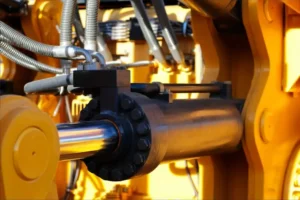الثايرستور التردد المتوسط (لو) مزود الطاقة هو جهاز تحويل التردد الثابت الحاسم الذي يستفيد من مكونات الثايرستور لتحويل طاقة تردد الطاقة ثلاثية الطور إلى طاقة التردد الوسيطة أحادية الطور. هذه التكنولوجيا تعرض القدرة على التكيف بشكل ملحوظ عبر مختلف تطبيقات التحميل, خاصة في القطاعات الصناعية مثل صهر المعادن, العزل, تلبد, اللحام, التبريد, هدأ, العلاج بالإنفاذ الحراري, تنقية المعادن المنصهرة, المعالجة الحرارية, الانحناء, ونمو البلورة.
قلب الثايرستور
في جوهرها, يشمل الإطار التشغيلي لمصدر طاقة التردد الوسيط ثايرستور ثلاثة مكونات رئيسية: مصدر الطاقة DC, دائرة التحكم, وعاكس. عندما تصدر دائرة التحكم إشارة الزناد إلى الثايرستور, ينشط, دفع مصدر الطاقة DC لإنشاء جهد AC كبير على الفور عبر المحول. هذا الجهد AC, بعد المرور عبر المرشح, يتحول إلى جهد DC المتقلب على طول خط أفقي. هذا الجهد المتقلب يدفع العاكس لإنتاج جهد التيار المتردد عالي التردد, موجه في النهاية إلى الحمل.

تكمن الوظيفة الأساسية لمصدر طاقة التردد المتوسطة في Thyristor في قدرتها على تحويل مصدر طاقة DC إلى طاقة التيار المتردد يمكن التحكم فيها, تمكين التكيف مع متطلبات الحمل المتنوعة من حيث النوع, قوة, والتردد. علاوة على ذلك, بسبب مجموعة المزايا مثل الكفاءة الكلية العالية, بناء خفيف الوزن, انبعاث ضجيج منخفض, القدرات السريعة وبدء التوقف, والأثر الحد الأدنى على شبكة الطاقة, هذه التكنولوجيا تحل تدريجيا محل مجموعات مولد الترددات الوسيطة.
تقوم دائرة العاكس بإخراج الطاقة الكهربائية التردد الوسيط, الذي ينتقل بعد ذلك إلى الحمل من خلال ملف التعريفي للتدفئة الحث. يتميز نظام تزويد الطاقة هذا بالتعديل التلقائي لطاقة الإخراج أثناء التشغيل, ضمان تشغيل الجهاز باستمرار بأقصى قدر من طاقة الإخراج, وبالتالي تعزيز كفاءة العملية بشكل كبير, مثل سرعة الانصهار.








